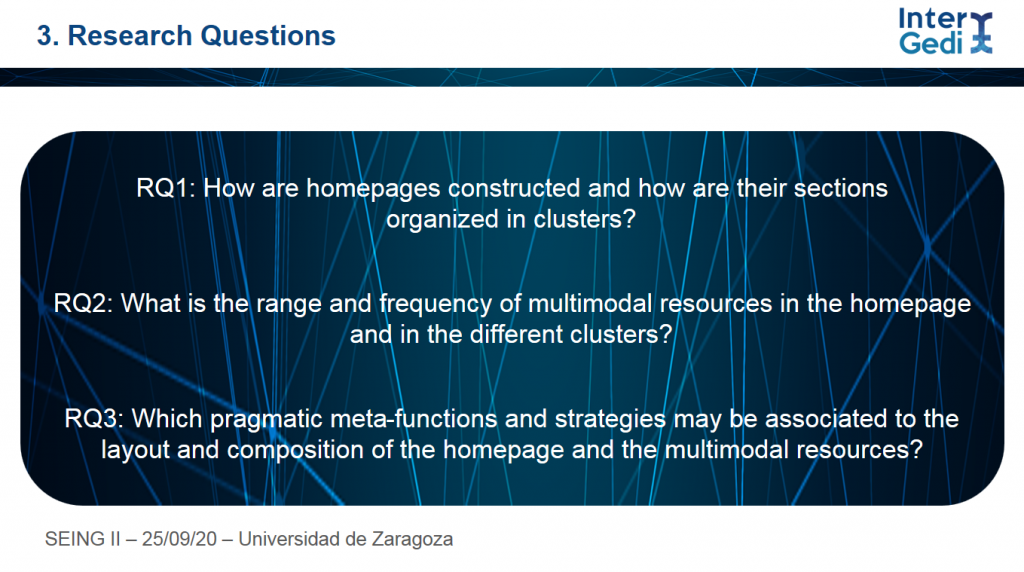Daniel Pascual explains the functioning of verbal and visual components of research project homepages
Daniel Pascual, the PhD candidate in our research group, presented at SEING II the first findings from a multimodal analysis he is undertaking to understand the pragmatic intents that come up out of the combination of verbal and visual elements when communicating online.

To address his research questions, he compiled an initial sample of 10 research project homepages. During the talk, he discussed different types of web structure research groups decide to choose when construing the homepages for their projects. A discussion of the nature and purpose of multimodal resources such as icons, logos and pictures in the homepages selected was also offered. Finally, he connected these two different aspects with the pragmatic meta-functions identifiable in the homepages. In all, his communication gave insights into how the web affordances and the multimodal choices made by the researchers were contributing to conveying their ultimate pragmatic intention.
The abstract of the paper is provided as follows for further information:
A pragmatic approach to the verbal and visual components in research project homepages
Texts and genres in digital environments purposefully combine verbal and visual components in the crafting of their structure. Homepages act as the window entrance to a website and the first layer of meaning and effect for the readership. Subsequently, layout seems a meaningful notion to pragmatically display one’s specific intent through verbal and visual resources. This qualitative study focuses on international research project homepages and seeks to analyse their layout together with the different verbal and visual components that make them up from a pragmatic perspective. Accordingly, a corpus of 10 homepages managed by H2020-funded research projects were selected. Layout, referring to the code of spatial composition (Kress and van Leeuwen 2006), served as an analytical tool to delve into the structure of the homepage and the distribution of texts. Results stem from a three-fold analysis that, first, groups texts into clusters and considers the organization of the website sections in the homepages as the user may scroll down to understand their saliency and function within the homepage composition, as well as their pragmatic functions and effects in order to communicate the research project. Second, the range and the frequency of modal resources (e.g. logos, images, videos, hyperlinks) are discussed, as featured in the homepage and as part of the different clusters. Third, a pragmatic analysis distinguishing three scopes or meta-functions (communicative, promotional and interactional) is proposed to match the layout and composition of the homepage, the modal resources displayed and the pragmatic intent behind. This study may contribute to identifying research groups’ communicative purposes and practices when showcasing their projects digitally by observing the pragmatic strategies conveyed in the mixing of the verbal and visual aspects. This can further help understand the complexity of the discursive and professional practices of researchers nowadays, especially in international and digital scenarios.
References
Kress, G. and van Leeuwen, T. 2006. Reading Images. The Grammar of Visual Design. London: Routledge.
